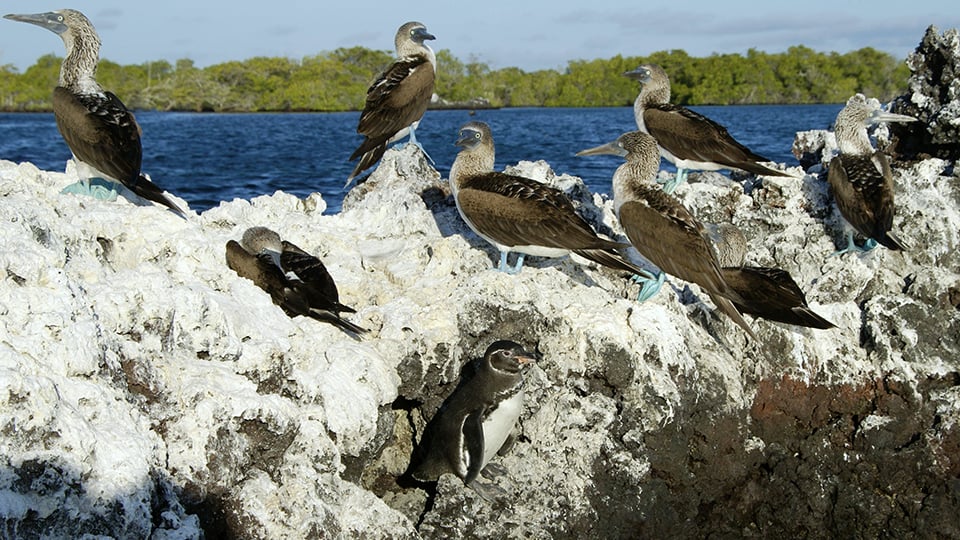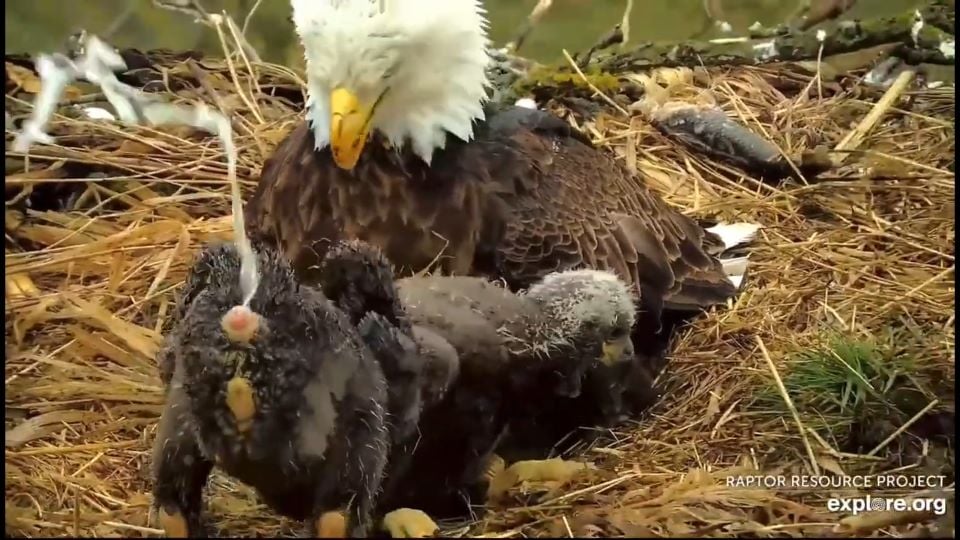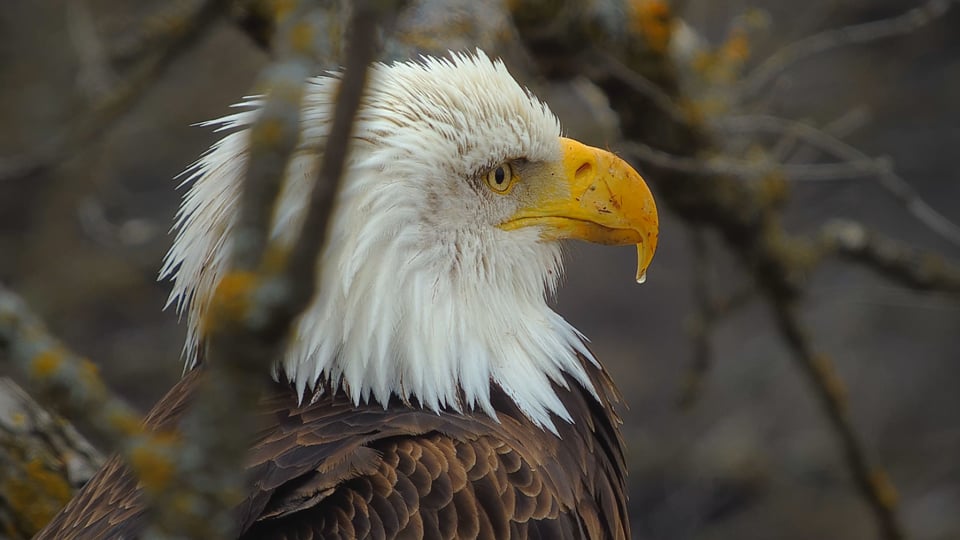Oh poop shoot! After a long, wet morning snuggled under Mombrella and Poptent, DN17 and DN18 needed to let it fly! Wonderful moments like this inevitably lead to questions and comments like “What is bird poop?” and “Does bird poop stink?” and ‘Ewwww…where did I put those wet wipes?‘ So what is bird poop and how do birds poop?
Defecation and Excretion
If someone tells us their dog pooped, defecated, or excreted, we know that the dog dropped a solid. So defecation equals excrement, right? No. Defecation (pooping) removes undigested and indigestible food waste, while excretion (urinating or peeing) removes waste (nitrogen, inorganic salts, ammonia, creatinine) produced by metabolic processes: biochemical reactions that provide bodies with the energy they need to live. Defecation looks relatively similar from species to species, but excretion can vary quite a bit!
 Guano, aka bird poop: a metabolic waste product with high levels of nitrogen, phosphate, and potassium. It has historically been a very valuable fertilizer!
Guano, aka bird poop: a metabolic waste product with high levels of nitrogen, phosphate, and potassium. It has historically been a very valuable fertilizer!
We humans use water to flush metabolic waste from our bodies. The process uses about 50-60% of the water that we consume daily, according to some sources. That isn’t a problem for us, but it is for birds. Birds and humans carry roughly the same amount of water weight by percentage (~60%), but we use it and lose it in very different ways. Humans predominantly lose water through urination, while birds predominantly lose water through respiration. If birds had to take on even more water for metabolic waste removal, they might be too heavy to fly, or at least to fly very far.
Back to Bird Poop!
Every living thing has to remove waste. Humans dissolve metabolic waste in water and evacuate it as urine: usually transparent clear to yellow pee, although it can come in other other colors (see this link for more information). Birds convert metabolic waste to uric acid to produce the pasty white substance we call bird poop. It is thick and often smelly, but unlike human poop, the white stuff is a byproduct of metabolic waste, not food waste.
 April 16, 2024: Mr. North, DN17, and DN18. It’s hard to separate food and metabolic waste when they exit from the same place. If I was Mr. North, I’d be happy that my eaglet was pointed the other way!
April 16, 2024: Mr. North, DN17, and DN18. It’s hard to separate food and metabolic waste when they exit from the same place. If I was Mr. North, I’d be happy that my eaglet was pointed the other way!
Having said that, we don’t really separate defecation and excretion when we’re grumbling about the mess birds leave on cars and sidewalks. See that dark blotch in the middle of the white puddle running down your windshield? That is feces or food waste, a byproduct of digestion. But where we have one exit for metabolic waste and another for food waste, a bird’s intestinal, urinary, and reproductive systems all terminate in a single posterior orifice: the cloaca, derived from the Latin word for sewer. Wastes exit from the same hole, look fairly similar, and are often mingled together in one big mess!
Built for flight means being light!
To understand bird elimination, we need to understand that birds are intricately shaped by the demands of flight, which means they are shaped to be light. Their minimal skeletons – at least as compared to a mammal or reptile – are built largely of hollow bones and are pneumatized by air sacs. Their respiratory systems ensure a staggering throughput of oxygen, which fuels their metabolic systems in the most efficient, lightest way possible. Birds, including species not associated with swimming, float for the same reason that rubber ducks do: they are (relatively) hollow and filled with air. They also swell and shrink organs, including gonads (who needs them outside of breeding season?) and digestive systems, reducing the weight and energetic demands of digestion during migration. Birds may have evolved as they did in part because they don’t need water for excretion. I will try to be more grateful for bird poop the next time I’m washing it from my car!
Did you know?
Many species of birds have salt glands – an extra-renal route for excreting salt – near their eyes or nasal passages. Why do they need an extra-renal route for purging salt? As uric acid and fecal wastes move through a bird’s kidneys and lower intestines, water, sodium, and potassium are reabsorbed, conserving water and resulting in the thick white uric acid/faecal sludge we call a poop shoot. Salt glands provide an extra-renal way to remove the sodium that birds reabsorb.
 Beautiful DNF surveys her realm! The droplet on her beak might have been exuded from her salt gland, which provides an extrarenal route for salt removal. Note her full crop.
Beautiful DNF surveys her realm! The droplet on her beak might have been exuded from her salt gland, which provides an extrarenal route for salt removal. Note her full crop.
Although the size and efficacy of salt glands vary from species to species, many birds of prey appear to use them based on work done by Cade and Greenwald. They noted that adult birds of prey don’t drink a lot of freshwater, and nestlings don’t drink any. The raptors they studied also tended to exude a fluid from their nares after finishing a meal. More here: https://sora.unm.edu/…/condor/v068n04/p0338-p0350.pdf
 The Raptor Resource Project
The Raptor Resource Project The Raptor Resource Project
The Raptor Resource Project